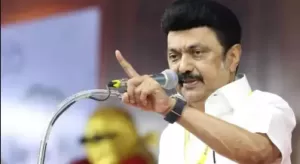Today marks the 73rd death anniversary of Mahatma Gandhi. Observed as Martyrs’ day and a day of national mourning, it was on this day that Gandhiji fell prey to the bullets of a Hindu extremist named Nathuram Godse.
While there will be a ceremonial show of mourning by the state at Gandhi Samadhi in Rajghat, the tragic reality is that contemporary India worships Gandhi’s assassin and assassinates the character of the father of the nation.
India’s freedom was intertwined with parricide and Partition was a division of Bapu’s soul. He loved Hindus and Muslims alike and both communities thought that he favoured the other. The truth was that he was trying to maintain communal peace and amity. If his experiments with brahmacharya remain a blot, Noakhali was his finest hour. There was something heroic about a 78-year-old man walking through riot-torn Bengal for communal peace.
In this age of post-truth, perhaps satyagrahi should be reinterpreted as a ‘seeker of truth’. For Gandhi, truth-seeking was the purpose of his life. In an article published in Young India on April 3, 1924, Gandhiji described himself as ‘a humble seeker of truth’.
Contemporary India’s greatest tragedy is the appropriation of Gandhi by the Rashtriya Swayamsevak Sangh. A recent book tries to cast him as a ‘Hindu patriot’. Nothing could be further from the truth.
The attempt at preparing an authentic edition of the Hind Swaraj and only focusing on the text is a misplaced attempt at cutting off the Mahatma from his experience. He was a man who devoted his life to truth seeking, which was an everyday struggle for him. His faith and nationalism were inclusive, not parochial. Any attempt to confine this apostle of peace and non-violence to a particular religion or nation is a flawed one.
Gandhiji was a self-confident Sanatani Hindu who realised that colonialism had kidnapped our soul; it forced us to think about ourselves in an alien tongue. No wonder he wrote Hind Swaraj in Gujarati and his eclectic spiritual diet included the Isha Upanishad, The Gita, Tulsi Ramayana, Sermon on the Mount and verses from the Quran. Gandhiji’s Catholic Hinduism and eclectic hermeneutics serve as an antidote to today’s Hindutva.
Most importantly, he was a practitioner first.
His long marches and walks, observances of silence and his spinning were intimately tied to his politics and his views on religious pluralism. It is important to understand his praxis in order to understand his thought.
While Hind Swaraj with its agenda of moral regeneration and political emancipation is considered as the Ur text of Gandhian thought, Gandhi’s interpretation of the Gita as anasakti yoga (gospel of selfless action) is much ignored. Written on the basis of the talks given by the Mahatma at Sabarmati ashram between February 24 and November 27, 1926, it urged his co-workers and fellow countrymen to fight the battle within.
Gandhi’s interpretation of the Gita continues to be relevant since the hatred and violence we see today around us, is perhaps a manifestation of the evil or Kaurava within all of us.
Independent India failed the test that Gandhi gave in his talisman. In our race to vikas (development), we forgot about the poorest and the weakest: our domestic helps, plumbers, gardeners, seamstresses, sweepers etc. are Gandhiji’s everyday men and women. He was a proponent of sarvodaya (emancipation of all) and antodaya (emancipation of the last or the weakest person). In a consumerist culture driven by social media, we seem to have forgotten basic values like kindness, compassion and empathy to even care about antodaya or sarvodaya.
More importantly, Gandhi represents the voice of conscience inside all of us. Trapped in the rut of social media discourse we find ourselves helpless when something wrong happens. Our conscience dies a silent death every time we have to bribe a government official to get our work done, every time a little girl is raped or a little boy goes hungry. Every time an Akhlaq (also ‘ethics’ in Arabic) is killed or a Pehlu Khan is flogged or an interfaith couple is harassed in the name of ‘love jihad’. Gandhiji represents the ‘feeble voice’ inside all of us.
He belongs to everyone and no one at the same time.
Maybe his cry of ‘hey Ram!’ when he was shot, was a cry of protest against the hatred in Nathuram. In official history, Gandhi died once on January 30, 1948, but we cannot deny that the Mahatma’s soul has been murdered repeatedly by the callousness of this republic.
(Madhav Nayar graduated in Modern South Asian History from SOAS. He is currently a freelance writer. Article courtesy: The Wire.)




